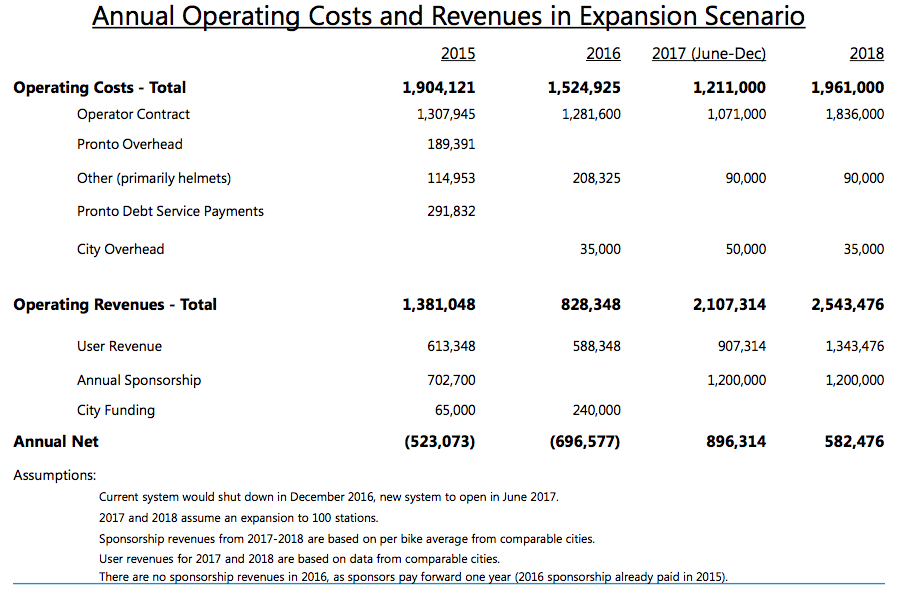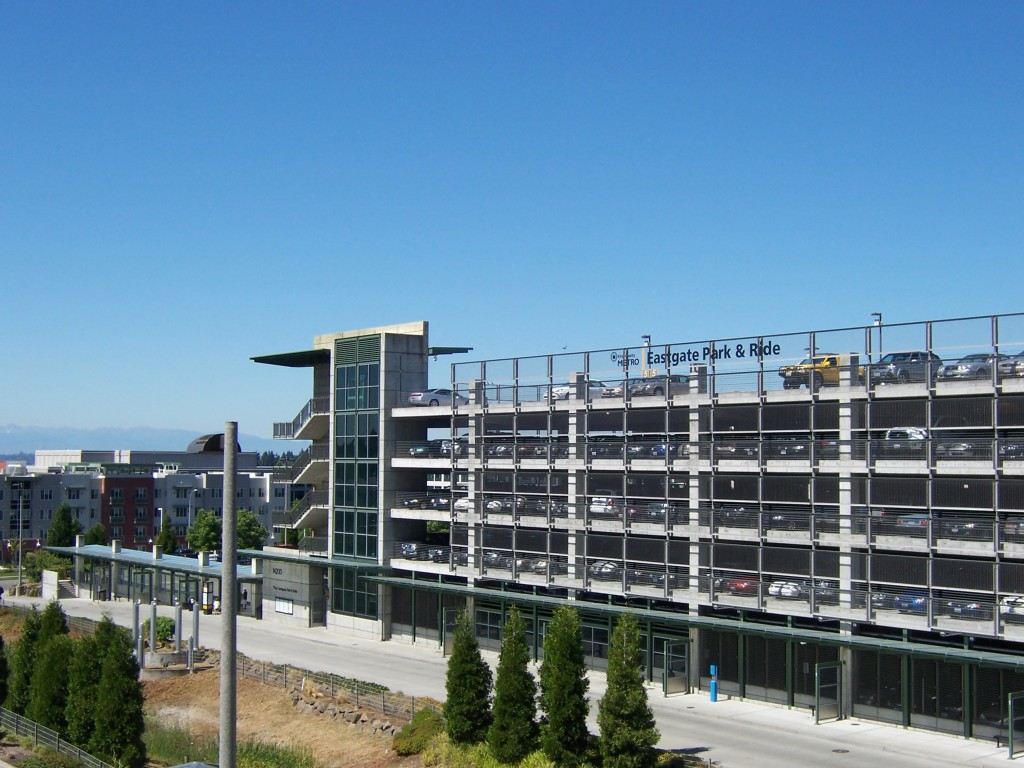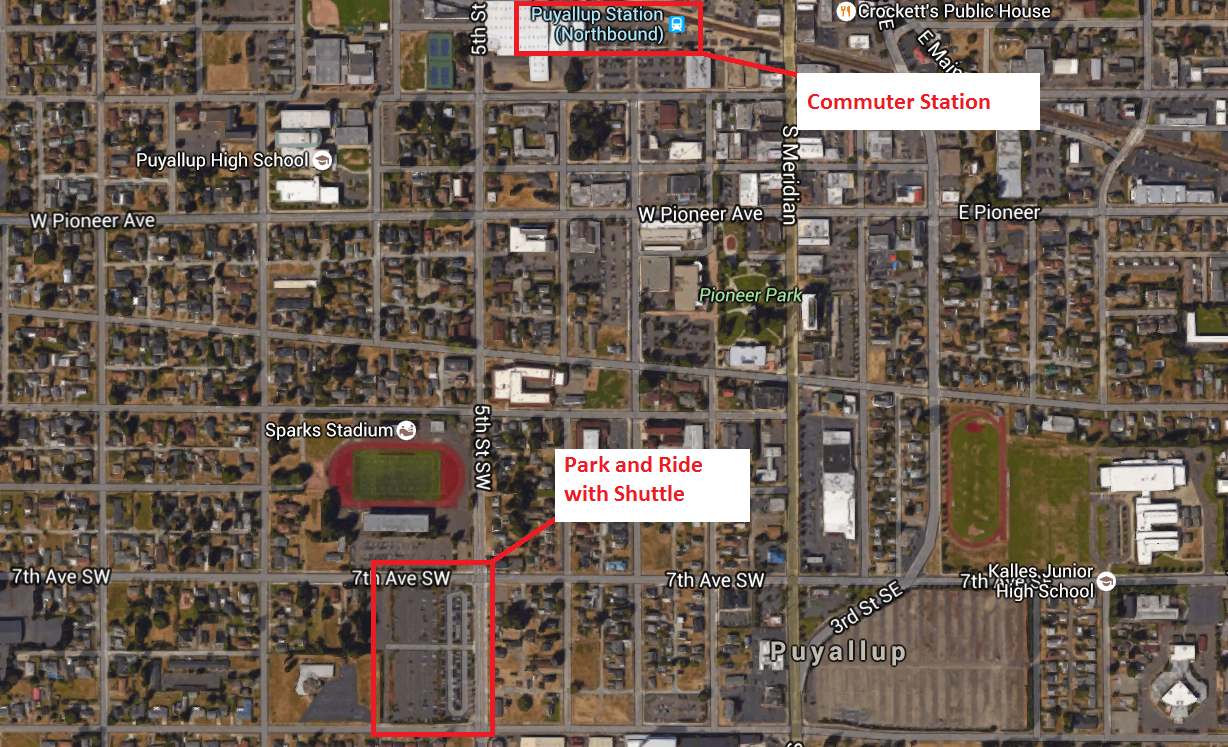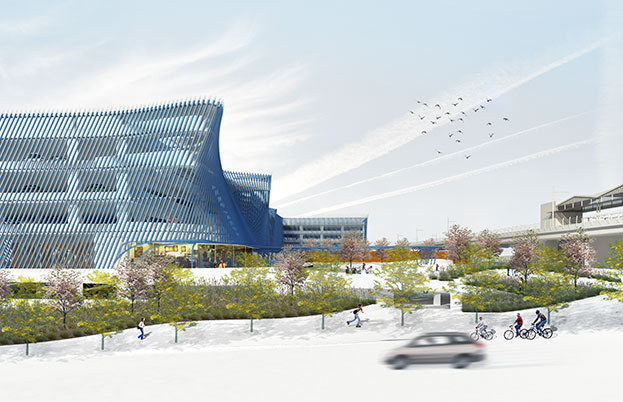Last October, The Seattle Times editorial board claimed that taking over Pronto Cycle Share would be fiscally irresponsible, arguing that: “Trying to turn the bikeshare system from an amenity into a form of mass transit is a lofty goal, but it would not be the best use of limited dollars. Seattle has too many other problems that also need solutions and investment.” They criticized the plan to acquire Pronto again in February, suggesting it would be more fiscally responsible to sell the system to the Eastside: “Seattle has more important things to spend money on than Pronto.” The Times ran other critical pieces of Pronto over the last year.
All this effort was used to criticize an expenditure that would ultimately cost the City $400,000 (not the $1.4 million The Times frequently mentioned). This expenditure guaranteed the preservation and expansion of a transit option that accounted for 144,000 trips, more than 1,900 members paying annual dues, and thousands of casual users.
Like all forms of transportation, bikeshare deserves public investment, especially considering how little money is required to serve so many people. In fact, the Seattle Department of Transportation’s (SDOT) conservative analysis showed it could actually make money. Bikeshare might be the only transportation system that is capable of recovering all its cost; operations and capital, and generate a surplus. This is possible because it’s an extremely inexpensive infrastructure investment compared to the number of people it can serve.

Which brings us to The Times hypocrisy. On Saturday, The Seattle Times published an editorial calling on Sound Transit to spend money on parking around rail stations, saying: “At this point, one principle is clear: Whatever is built must include parking.” The editorial board believes even more subsidized parking in Sound Transit 3 is needed than what’s already planned — 18,000 parking stalls costing just shy of a billion dollars. So let’s compare the return on investment between Pronto and park and rides.
The Seattle Times opposed spending $400,000 to save Pronto, a system that serves thousands of people and may recover all its cost. Yet the same editorial board supports spending hundreds of millions of dollars to serve a similar number of people and no chance of recovering costs.
Parking spaces costs between $15,000 and $65,000 per space. Adding just a thousand spaces at Tukwila will cost at least $58 million, or $58,000 per space. Seattle’s expenditure on Pronto was equal to about seven parking spaces. Seven parking spaces will serve less than 15,000 trips in a year, compared to Pronto’s 144,000. It should be obvious which investment serves more people and is more financially responsible.
Park And Ride Strawmen
It’s really no surprise, though, that The Seattle Times supports park and rides. When it’s convenient, they’ll wield the rhetoric of fiscal responsibility. But that’s just a tool, not a motivating principle. Their true motivations are expressed by the editorial’s title, “Sound Transit 3: Cars are still a reality in a mass-transit future.” They appear critical of planning principles like transit-oriented development. The entire editorial is a not-so-subtle dig at people who want to plan growth around transit stations. They paint park and ride critics as ideological extremists living in a fantasy world.
Sound Transit must avoid the ideological planning that has skewed policy decisions in Seattle.
Pragmatism is especially important at Sound Transit, which will continue to provide a variety of options to the diverse area it serves. For many residents, cars are the only reasonable option to access transit.
Even in dense, urban areas, Sound Transit should plan for continued use of the automobile despite the anti-car zealotry in vogue at Seattle City Hall. At a minimum, transit stations need places for cars to drop off passengers.
The future does not entail channeling our inner Robert Moses to build parking garages in dense neighborhoods. Building infrastructure that detracts from the local value is not a way to make places better.
The article clearly articulates the limits and problems with parking garages when it states, “The need for parking is crystal clear, especially to commuters vying for the 14,000 spaces now provided at regional park-and-rides. Most spots are full by 8 a.m.” The Seattle Times editorial board should actually propose a number. How much parking is enough? Do they really believe Sound Transit can build enough free parking to ensure an open space any time of day?
It’s irresponsible of the editorial board at the city’s paper of record to so obviously mischaracterize the arguments of its opponents. Let’s be clear: no one is arguing that there will be no cars in the future. Suggesting your opponents believe we will live in a future without cars is a strawman. It is an often repeated and obnoxious criticism of many efforts to make Seattle’s transportation work better for everyone.
A Financially Responsible Argument Against Park And Rides
No one is saying there should be zero parking near transit stations. People aren’t ‘park and ride opponents.’ They are opponents of using transit dollars to subsidize car ownership. To paraphrase The Seattle Times editorial board, trying to serve everyone who owns a car in the suburbs is a lofty goal, but it would not be the best use of Sound Transit’s limited dollars. The Puget Sound Region has too many other problems that need solutions and investment.
The Times uses a rhetorical trick to criticize the Pronto purchase. The articles imply that the money could be used for another purpose, in one case specifically suggesting the Greenwood Food Bank. Government money is never 100% fungible. Many criticisms of spending resemble the argument that if only the City wasn’t spending money on project A, we could take care of project B.
Often times, this is purposely misleading, such as the case with the Pronto acquisition. The money was in SDOT’s budget specifically for Pronto and allocated for Pronto in a levy that passed overwhelmingly. Not only would this money never have gone to the Greenwood Food Bank, we don’t have to play the conservative game of pitting public interests against each other. Instead, we can choose to tax ourselves for priorities we think are important, like we did with Pronto.
However, in some cases we really do have tradeoffs. When individual projects and agencies are allocated money to achieve a goal, there is some discretion within the project goals about how best to use the money. If Pronto was solvent, the money used for the asset purchase could’ve instead been used to expand the system. This is how we have to think about ST3. Sound Transit will be allocated a budget and those dollars will be limited. We can support a bigger package so Sound Transit can do more, but once the budget is set, all spending will require tradeoffs and opportunity costs. Money spent on one service will be money not spent on another service. No one is supporting light rail between Issaquah and Skykomish because it would preclude other, higher priority lines. When The Seattle Times editorial board calls for parking garages, they are saying this is more important than other priorities. Would The Times support eliminating light rail to Issaquah so we can have more park and rides? It’s not clear because the editorial completely overlooks any tradeoffs from building more subsidized parking
One priority that Sound Transit might consider instead of park and rides would be literally burning the cash that would otherwise be spent on garages. This would be less expensive than indefinitely operating parking at a loss, allowing Sound Transit to allocate those savings to better transit service.
Joking aside, there are options Sound Transit could prioritize that would generate revenue, such as housing or commercial space. Since operating parking garages costs money and development earns money, this would be a financially responsible option. Furthermore, given the fact that Sound Transit is a transit agency with a limited amount of money, subsidizing driving should be pretty low on its priority list.
Beyond Financial Responsibility
It’s important to clarify that Sound Transit isn’t just trying to earn the highest revenue. It is also trying to create a sustainable transportation system, equitably serve the region, and contribute to livability goals. All of those priorities are directly harmed by using public dollars to subsidize parking near stations.
The argument for park and rides is that people won’t be able to get to stations with their cars if we don’t build parking. So is the problem that we don’t have parking near stations or that we don’t have housing near stations? The Times wants you to believe the former in order to prevent the latter.
People could get to the station if they lived next to it. But they don’t because instead of building housing, we build suburban infrastructure like park and rides. This infrastructure takes up space that could be used for housing, makes areas less walkable and lowers the appeal of building housing on other parcels. Without housing options by transit, people are locked into car ownership. Those that want to live car-free or car-lite — and those that can’t afford cars — are all forced to compete for the tiny amount of real estate that actually has housing by transit, the most expensive real estate in the entire region.
The common answer to all this is that we need parking in the suburbs. But again, this is a rhetorical trick. No one is arguing that there shouldn’t be parking. People are arguing that using public money to subsidize parking is bizarre. Instead, we should be subsidizing housing near transit, generating revenue, and increasing the number of areas people can live car-free or car-lite.
Furthermore, light rail stations pose a choice beyond how to spend tax dollars. Sound Transit also has to decide how to use a limited amount of space. In the entire Puget Sound Region, there is very little land that is within walking distance of high quality transit. The best use for this land is not parking. Parking can be placed basically anywhere with shuttles to transit. The only space that is within walking distance to transit is the walkshed of the transit station.

Every garage built close to transit is a lost opportunity to build housing within walking distance of jobs and a lost opportunity to develop walkable neighborhoods that are more affordable than central Seattle. Yes, we can have buildings with parking and housing. It’s very likely that the private market will make that choice. But the public dollars and public space used to develop parking are subsidies for cars that are preventing additional housing and walkability. Advocates of park and rides may frame their opponents as opposing parking, but that’s not the reality. People are opposing subsidizing park and rides because affordable housing and walkable neighborhoods are higher priority. Areas with high quality transit stations are the only places we can build those. This is realism, unlike The Seattle Times‘ “cars will still exist in the future” strawman.
A Pragmatic And Realistic Solution
It’s worth repeating, no one thinks we shouldn’t have any parking. Critics of Sound Transit’s park and rides are instead illuminating a frustrating circularity to the argument for subsidized parking. Supposedly ,we have to build park and rides instead of housing because there isn’t enough housing near transit. Let’s consider a few alternative options.
A private parking lot could be placed anywhere, providing the density of users necessary to support a shuttle to transit stations. This solution is commonly utilized around airports and would avoid draining public tax dollars from our transit agencies to subsidize driving. In fact, Sound Transit already does this in Puyallup when there’s more demand for parking than what’s available at the station. This helps to protect the small amount of walkability around the station from further eroding. The Times doesn’t address why we need publicly subsidized parking instead of privately owned lots. My only guess is that people might think low-income riders can’t afford private lots. However, this ignores the fact that public lots are subsidized for everyone, including the storage of people’s Beemers and Maseratis. The money Sound Transit saves from not building garages could be used to provide more equity. Sound Transit could increase the amount of affordable housing, cover the parking costs of low-income commuters at private garages (possibly by using ORCA Lift), and expand transit options around stations.

Providing parking elsewhere would free up space near the stations for other uses, specifically housing. The Times admits housing near transit is a good solution and suggests tearing down park and rides when people can live without a car. It turns out that time is now. The only catch is, we have to build housing instead of parking. Sound Transit could even improve the walkability around its stations by requiring commercial and retail space.
Lastly, The Seattle Times editorial board could heed its own advice and push the agency to subsidize more important priorities, like affordable housing. After all, if we’re going to use Sound Transit as a cash cow to subsidize other needs, affordable housing seems more logical during a housing crisis. This subsidized housing would be much more useful to low-income commuters than parking.
Overall, The Seattle Times editorial board needs to stop pretending that advocates for better cities are out of touch with reality. We aren’t ideological zealots pushing for a fantasy future. We are fiscally responsible and asking that our tax dollars stop subsidizing car ownership, especially for the middle class and wealthy. We understand that most people own cars and cars make people’s lives much easier. But we also want to make sure the future gives people the freedom to not own a car should they choose. The only places this will ever be possible is within walksheds of high quality transit.
Unfortunately, there is no doubt that Sound Transit will use its land and dollars on subsidized parking, reinforcing suburban patterns that make it difficult to go car-free or car-lite. Sound Transit should waste as little money and space as possible on subsidizing car commuting. It would be more responsible for The Times to follow the lead of “Seattle’s Only Newspaper” and push Sound Transit to maximize the production of subsidized housing. That’s the choice we face, parking or subsidized housing. Walkable communities or more suburban infrastructure. Suggesting we can have both isn’t facing a hard truth. It’s glossing over the fact that we have a limited number of subsidy dollars and limited amount of space within the walksheds of stations. Are we going to subsidize housing or parking?

Owen Pickford
Owen is a solutions engineer for a software company. He has an amateur interest in urban policy, focusing on housing. His primary mode is a bicycle but isn't ashamed of riding down the hill and taking the bus back up. Feel free to tweet at him: @pickovven.

